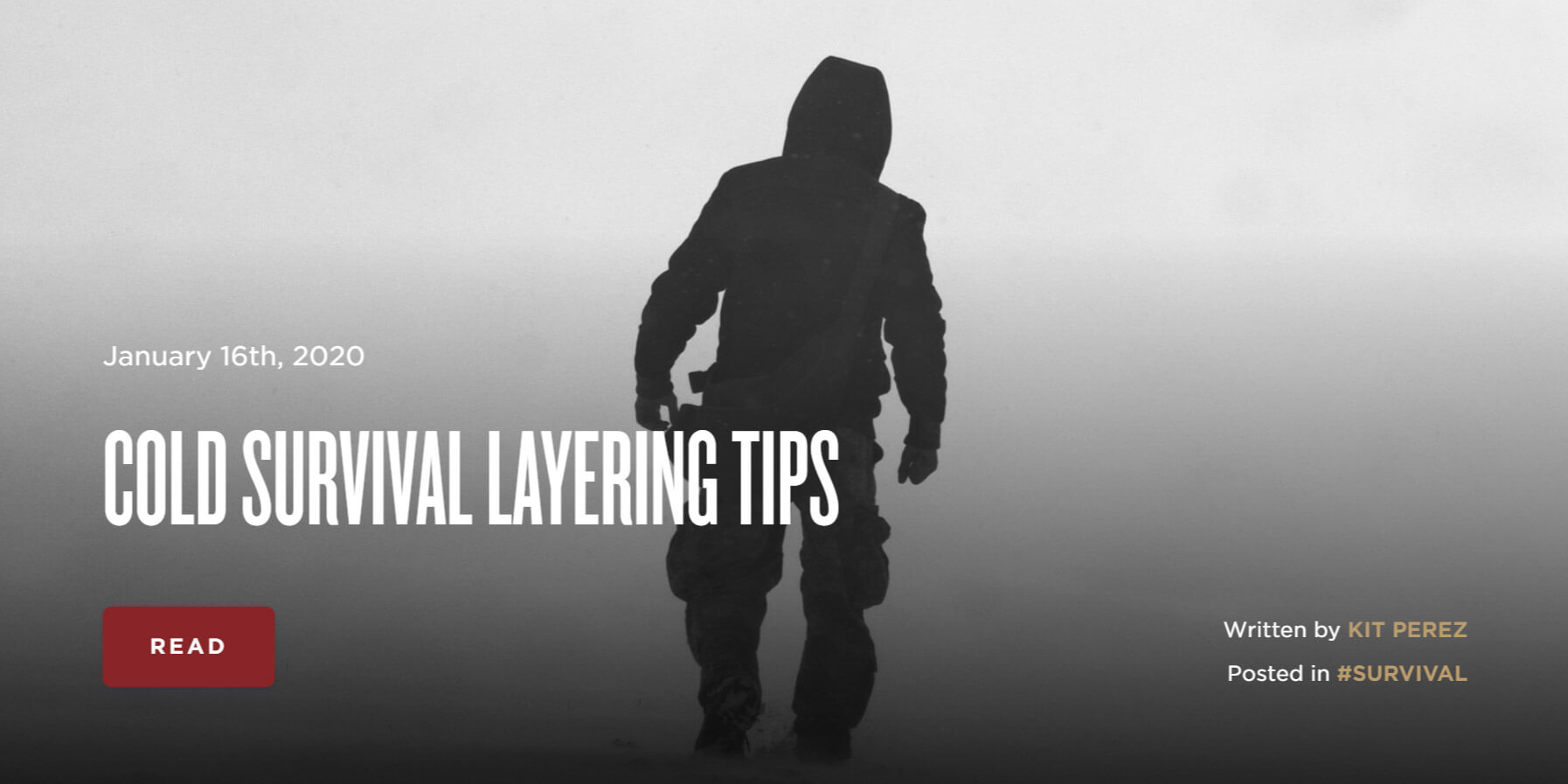The Armory Life
Alpha
Welcome to The Armory Life Forum. This auto-generated thread is for discussing The Armory Life article titled Cold Survival Layering Tips which can be found at https://www.thearmorylife.com/cold-survival-layering-tips/.



My dad taught me his rule, the rule of not being warm, bit not cold. He said dressing for being outdoors in winter required one to not be cold, yet not be "warm". Being just on the edge of cool allows you to work, or even simply walk around outside without sweating. Sweating kills...
To this end layering was key, and always having an additional layer in case you get stuck overnight. Which is why there are wool blankets in my vehicles, and when I am woodswalking I always carry a wool blanket tumpline fashion with a few goodies wrapped inside.
I once read, cannot remember where, so cannot quote completely, but I believe it was a study done by a university on the insulating properties of various materials. It said that wool is one of the top natural insulators, and that yes, even wet it retains the best insulating properties.Layering effectively helps a ton in colder weather. A good tip to know, wet or dry wool is a very good insulator. Different grades or thicknesses make a huge difference. A thin outer polyester shell coat that can be unzipped or unbuttoned can act as a regulator to trap or release heat and moisture in or out. Have been just as warm in 16 degree weather as in 90 degree weather. Heat can build up very quick in cold weather when keeping active.
